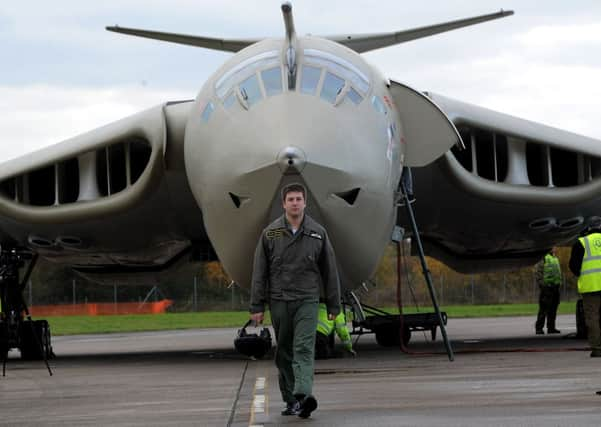Anniversary of V-bomber’s arrival marked at air museum


And the 20th anniversary of the arrival of the Handley Page Victor V-bomber XL231, which is better known as Lusty Lindy, at the Yorkshire Air Museum in Elvington, near York, was marked today when the aircraft was given a run-out along the airfield. The bomber, which was part of the UK’s strategic nuclear strike force and saw service in both the Falklands conflict and the first Gulf War, was given the 120-knot run to coincide with the moment it touched down at the museum at 2.20pm on November 25, 1993.
It was built in 1961 and had its maiden flight on December 28 that year before joining 139 Squadron at RAF Wittering in 1962. It was during Desert Storm in the Gulf War that HP Victor XL231 was given its “Lusty Lindy” name, in honour of the crew chief’s wife. The bomber returned to the UK in September 1993 but 55 Squadron was disbanded the next month, with XL231 making its last service flight as part of the disbandment flypast.
Advertisement
Hide AdAdvertisement
Hide AdThe aircraft was saved through a collaboration between the museum, the Handley Page Association and businessman Gerry Tempest. He was persuaded by his son and former Yorkshire Air Museum member Andre to help fund the purchase.